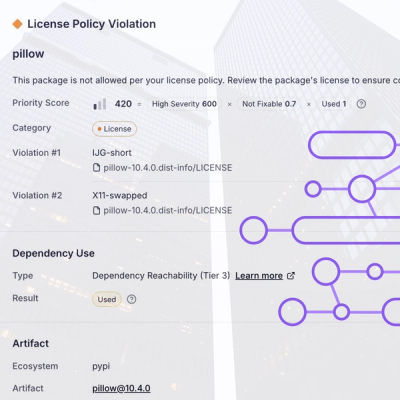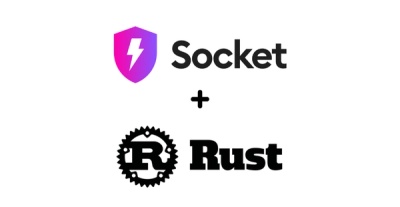
Research
/Security News
Critical Vulnerability in NestJS Devtools: Localhost RCE via Sandbox Escape
A flawed sandbox in @nestjs/devtools-integration lets attackers run code on your machine via CSRF, leading to full Remote Code Execution (RCE).
scroll-behavior
Advanced tools


Pluggable browser scroll management.
This library is not generally meant to be used directly by applications. Instead, it's meant to be used in integrations for routing libraries or frameworks. For examples of such integrations, see:
import ScrollBehavior from 'scroll-behavior';
/* ... */
const scrollBehavior = new ScrollBehavior({
addNavigationListener,
stateStorage,
getCurrentLocation,
/* shouldUpdateScroll, */
});
// After navigation:
scrollBehavior.updateScroll(/* prevContext, context */);
$ npm i -S scroll-behavior
Create a ScrollBehavior object with the following arguments:
addNavigationListener: this function should take a navigation listener function and return an unlisten function
stateStorage: this object should implement read and save methods
save method should take a location object, a nullable element key, and a truthy value; it should save that value for the duration of the page sessionread method should take a location object and a nullable element key; it should return the value that save was called with for that location and element key, or a falsy value if no saved value is availablegetCurrentLocation: this function should return the current location objectThis object will keep track of the scroll position. Call the updateScroll method on this object after navigation to emulate the default browser scroll behavior on page changes.
Call the stop method to tear down all listeners.
You can customize the scroll behavior by providing a shouldUpdateScroll callback when constructing the ScrollBehavior object. When you call updateScroll, you can pass in up to two additional context arguments, which will get passed to this callback.
The callback can return:
x and y, such as [0, 100], to scroll to that positionid or name of an element, to scroll to that elementAssuming we call updateScroll with the previous and current location objects:
const scrollBehavior = new ScrollBehavior({
...options,
shouldUpdateScroll: (prevLocation, location) =>
// Don't scroll if the pathname is the same.
!prevLocation || location.pathname !== prevLocation.pathname,
});
const scrollBehavior = new ScrollBehavior({
...options,
shouldUpdateScroll: (prevLocation, location) =>
// Scroll to top when attempting to visit the current path.
prevLocation && location.pathname === prevLocation.pathname
? [0, 0]
: true,
});
windowCall the registerElement method to register an element other than window to have managed scroll behavior. Each of these elements needs to be given a unique key at registration time, and can be given an optional shouldUpdateScroll callback that behaves as above. This method should also be called with the current context per updateScroll above, if applicable, to set up the element's initial scroll position.
scrollBehavior.registerScrollElement(
key,
element,
shouldUpdateScroll,
context,
);
To unregister an element, call the unregisterElement method with the key used to register that element.
If you need to further customize scrolling behavior, subclass the ScrollBehavior class, then override methods as needed. For example, with the appropriate polyfill, you can override scrollToTarget to use smooth scrolling for window.
class SmoothScrollBehavior extends ScrollBehavior {
scrollToTarget(element, target) {
if (element !== window) {
super.scrollToTarget(element, target);
return;
}
if (typeof target === 'string') {
const targetElement =
document.getElementById(target) ||
document.getElementsByName(target)[0];
if (targetElement) {
targetElement.scrollIntoView({ behavior: 'smooth' });
return;
}
// Fallback to scrolling to top when target fragment doesn't exist.
target = [0, 0]; // eslint-disable-line no-param-reassign
}
const [left, top] = target;
window.scrollTo({ left, top, behavior: 'smooth' });
}
}
Integrations should accept a createScrollBehavior callback that can create an instance of a custom scroll behavior class.
FAQs
Pluggable browser scroll management
The npm package scroll-behavior receives a total of 49,493 weekly downloads. As such, scroll-behavior popularity was classified as popular.
We found that scroll-behavior demonstrated a not healthy version release cadence and project activity because the last version was released a year ago. It has 1 open source maintainer collaborating on the project.
Did you know?

Socket for GitHub automatically highlights issues in each pull request and monitors the health of all your open source dependencies. Discover the contents of your packages and block harmful activity before you install or update your dependencies.

Research
/Security News
A flawed sandbox in @nestjs/devtools-integration lets attackers run code on your machine via CSRF, leading to full Remote Code Execution (RCE).

Product
Customize license detection with Socket’s new license overlays: gain control, reduce noise, and handle edge cases with precision.

Product
Socket now supports Rust and Cargo, offering package search for all users and experimental SBOM generation for enterprise projects.